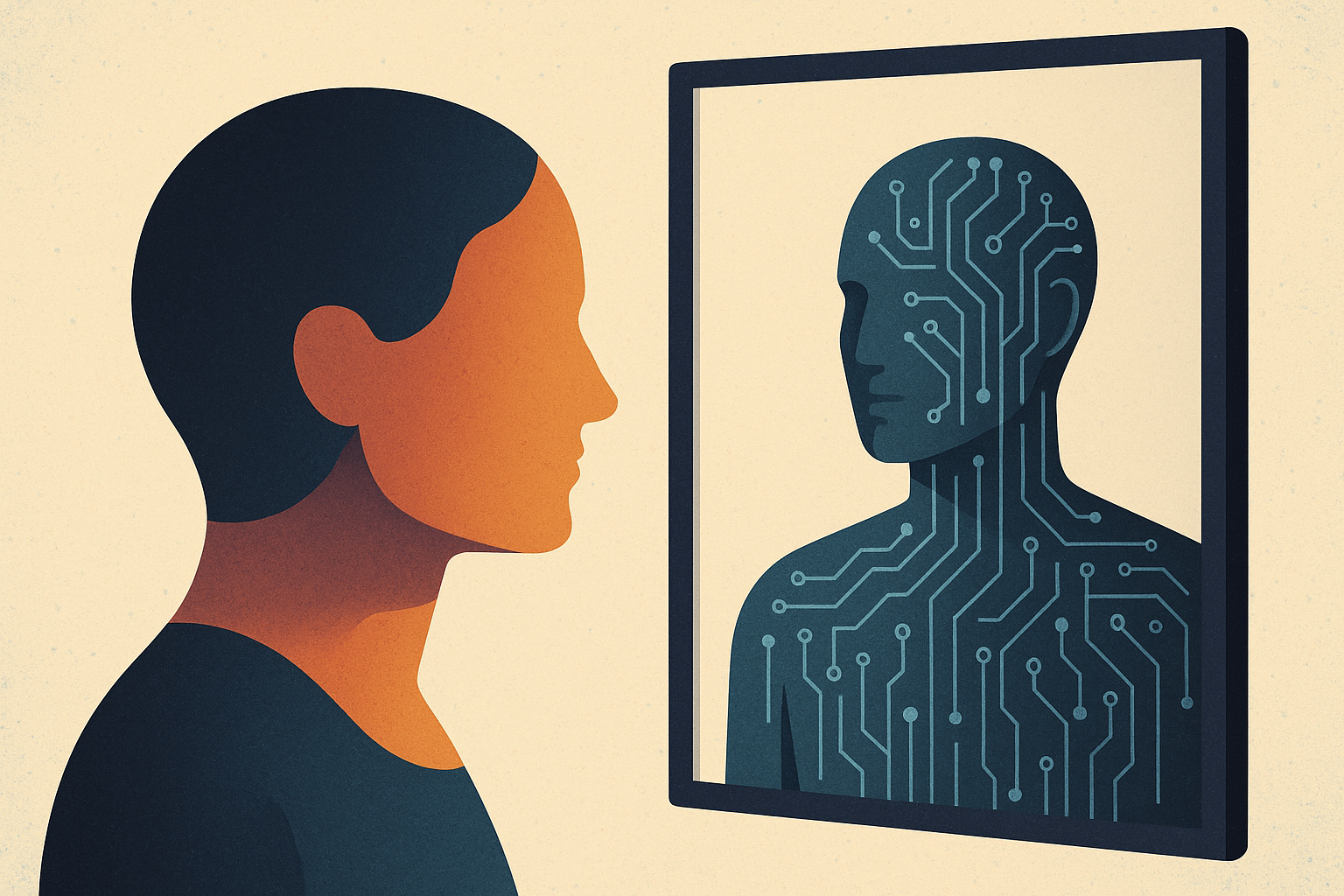AI Is Not Your Learning Strategy. It’s a Mirror of It
Artificial Intelligence has changed how we collect data and deliver learning, but it has not changed what makes people grow. Most organizations see AI as the next big tool in Learning and Development. In reality, it is a mirror. It reflects the quality of the corporate learning strategy that already exists.
If your programs are transactional, AI will make them faster. If your culture is shallow, AI will make that obvious.
What AI Can Do Well
AI brings clear advantages to corporate training. It can personalize content, predict skill gaps, and give instant feedback that keeps learners on track. Used wisely, it saves time and makes knowledge transfer efficient. These are valuable gains, but they are not transformation.
The Risk of Over-Automation
When efficiency becomes the goal, learning loses meaning. Some companies are now automating development so completely that employees consume AI-powered training alone at their desks. Information moves faster, but connection disappears. Growth requires friction, reflection, and shared experience. Without those, learning becomes another task to complete.
Why AI Cannot Build Conviction
Conviction, empathy, and sustainable habits come from human experience, not algorithms. People change when they see, feel, and live the consequences of their choices. Data can reveal a pattern, but it cannot create belief. Only experience can turn information into behavior change that lasts.
Where Experiential Learning Completes the System
This is where experiential learning restores balance. It translates AI insights into action. If analytics show that decision-making or collaboration are weak, an experiential program lets people practice those behaviors under pressure. Participants learn to adapt, communicate, and recover, the same skills AI cannot teach but will quickly expose as missing.
At Eagle’s Flight, we integrate data-driven insight with experiential design to create complete learning systems. AI identifies the opportunity, and experience builds the capability. This combination strengthens leadership development as much as team performance, because leaders model what they experience.
Principles for Using AI Without Losing Humanity
Balance automation with interaction. Use AI to guide learners, but keep space for real dialogue and reflection.
Leverage personalization, not prescription. Let AI enable personalized learning paths while allowing exploration beyond the algorithm.
Design for application. Every insight should connect to a moment where people act on it.
Reflect and measure. Use AI feedback loops to track progress but pair them with team reflection to build conviction.
The Leadership Challenge
AI will not fix your learning culture. It will reveal it. If your foundation is built on genuine learning, connection, and practice, AI will amplify that strength. If it is built on compliance and content, AI will only accelerate the noise.
The question is not whether to use AI. It is whether your culture is ready for the transparency it brings in the future of work.
FAQs: AI and Experiential Learning
How is AI changing corporate learning?
AI personalizes learning, predicts skill gaps, and provides real-time feedback. It helps leaders see where teams need support, making learning more targeted and measurable.
What is the biggest risk of using AI in L&D?
Over-automation. When learning becomes a digital checklist, people disengage. Without human interaction and reflection, knowledge does not turn into behavior change.
Can AI drive behavior change on its own?
No. AI can deliver content and insights, but conviction and habit formation require lived experience and human connection.
How does experiential learning complement AI?
Experiential learning takes the data AI provides and turns it into practice. It gives learners a space to apply insights, make decisions, and see results in real time.
What are practical ways to combine AI and human-centered learning design?
Use AI for assessment and personalization, then follow with experiential sessions that let teams act on the insights. Review results with both AI data and human feedback to reinforce learning.
Why will AI expose weak learning cultures?
Because it makes performance data visible. If engagement and application are low, the analytics will show it instantly. Strong cultures will use that visibility to improve. Weak ones will try to hide it.





